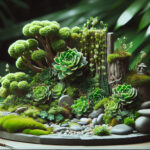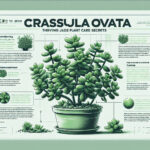Getting to Know Your Crassula
An introduction to Crassula plants, their origin and why they’re popular as houseplants. Briefly touch on the different varieties and their unique features.
Imagine a plant so versatile that it can bask in the sun from the rugged cliffs of South Africa and still flourish on your office desk with just ambient light. Welcome to the world of Crassula, a genre of succulents that are not just plants but living sculptures for enthusiasts and casual plant lovers alike. Known widely for the beloved Jade Plant, Crassula varieties come in an array of shapes, from tree-like structures to shrub forms, boasting thick, glossy leaves that epitomize the very essence of resilience.
One might wonder, what’s the secret behind their admiration as houseplants? It’s simple: Crassulas are masters of adaptation. They’ve evolved to survive arid conditions with ease, storing water in their fleshy leaves and stems – a trait that makes them incredibly forgiving to the forgetful waterer.
Take a gander at your local plant shop or an online succulent treasury, and you’ll be greeted by descriptors like the paddle-leafed Crassula “Gollum” or the Crassula “Hobbit” with leaves resembling green spoons at a banquet for hobbits. It’s hard not to be charmed by their whimsical shapes that could have been plucked from a fairy tale.
But don’t be fooled by their dainty appearance; Crassulas are as tough as they come. Whether nested in a patchwork of pots on a sun-drenched patio or brightening a cozy corner of your home, these succulents stand as testaments to nature’s ingenuity.
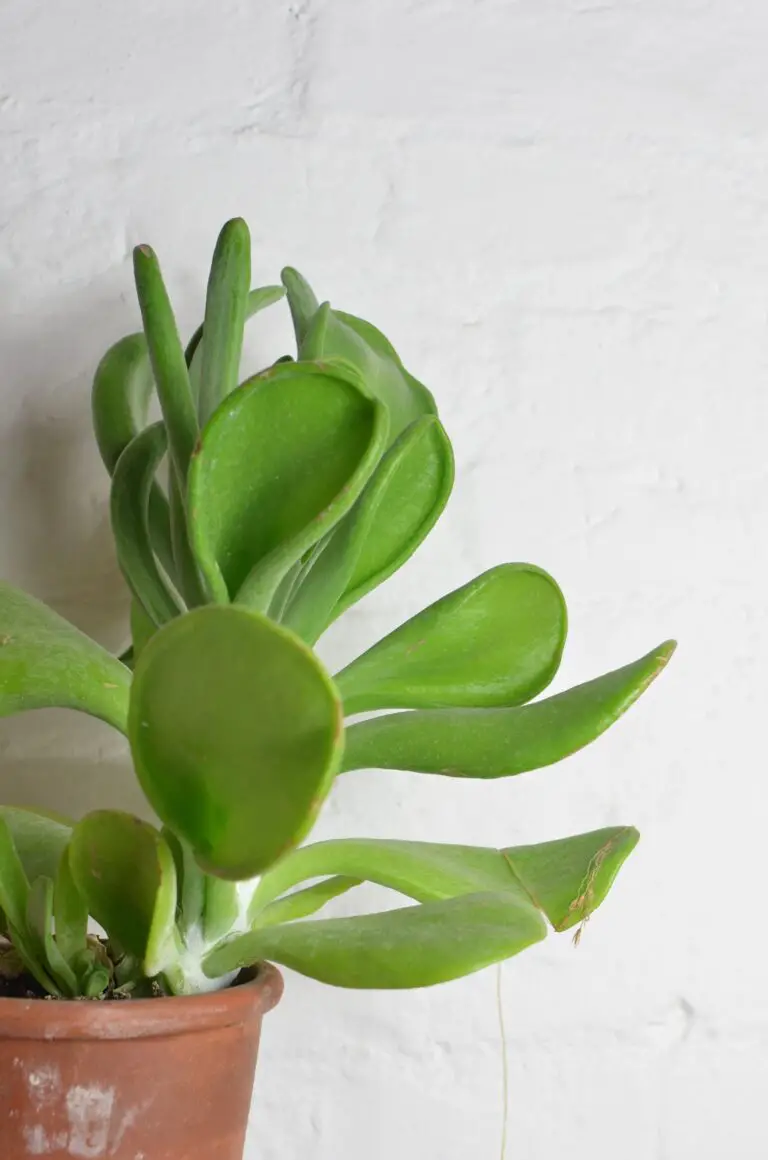
Optimal Lighting for Jade Plants
Let there be light! But not just any light – we’re talking about the correct dosage of sunbeams for your Crassula plant to thrive. Imagine waking up to the perfect sun-kissed morning where everything just feels right; that’s the kind of bliss your Jade plant seeks. So, how do we bottle up that morning glory and serve it on a leafy platter?
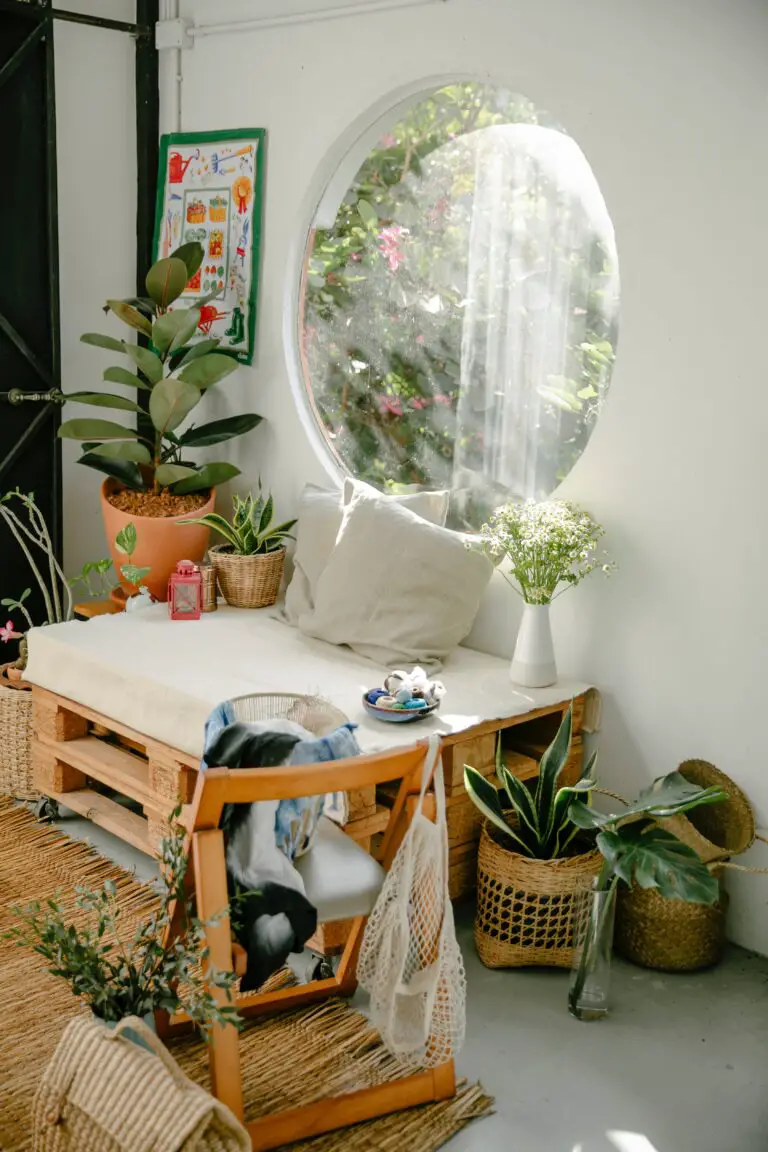
First things first, placement is key. These succulents crave a spot that is bathed in a few hours of direct sunlight followed by indirect, softer light. Picture your Crassula basking in a pool of morning sun by a east-facing window like a lazy cat stretching after a good nap. But beware of the afternoon blaze in summer months, as it can be intense enough to make your succulent friend turn a sunburned shade of red!
But what if you’re living in a cave-like apartment where natural light is as rare as a unicorn? Fear not! Artificial grow lights are the next best thing since sliced bread for indoor gardeners. Just remember to give your Crassula its beauty sleep; 14-16 hours of light should be followed by a peaceful 8 hours of darkness.
If you’re curious about more ways to keep your Crassula in top-notch condition, check out our comprehensive guide on enhancing your green space with Crassula plant care tips. Who knows, you might just become the next green-thumbed guru on the block!
Tailoring the lighting needs for your Crassula plants isn’t just about growth; it’s about crafting the perfect environment for a piece of nature’s art to flourish. So let’s dial up the daylight and watch your jade gems grow with glee. And remember, it’s not just about keeping your plant alive, it’s about letting it live its best life!
Watering Wisdom: Crassula Irrigation
Picture this: your Crassula plant, basking in the cozy glow of your living room, is about to embark on a hydration journey thanks to your diligent care. The key to ensuring your Crassula remains a verdant treasure lies in mastering the “soak and dry” method. It’s like giving your jade plants a tall glass of water after a long hike—they drink deeply and then take a breather.
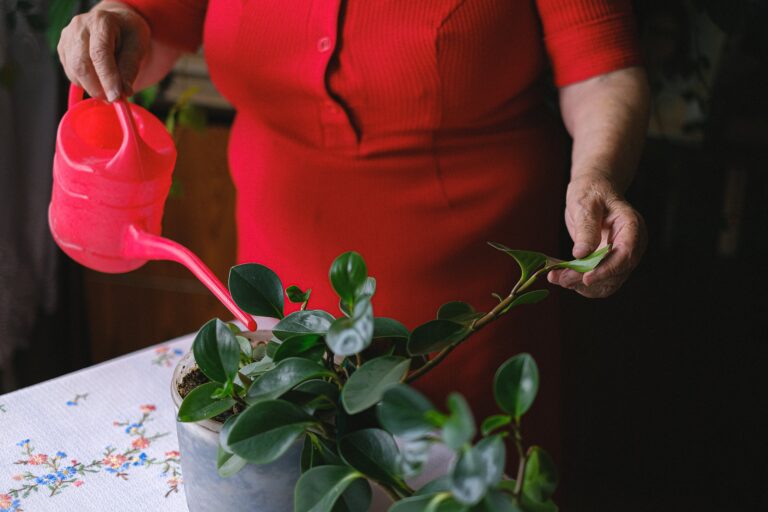
Here’s the nitty-gritty: Drench the soil completely, allowing the water to run free from the drainage holes at the bottom of the pot—a sign your plant has quenched its thirst. Then, and this is crucial, let the soil dry out completely before the next watering session. It’s not about a schedule; it’s about soil moisture. A dry top inch of soil is your cue to grab the watering can once more.
The rhythm of watering will waltz with the seasons. Summer sees your Crassula plant’s thirst peaks, so watering every 2-3 weeks might be the norm. Come winter, a resting phase for the plant, watering once monthly—or even less—might suffice. Monitor the soil more than the calendar, and you’ll be in sync with your plant’s needs.
Now for the tell-tale signs of watering wins and woes. Overwatering is a common faux pas; it leaves the leaves puffy, discolored, and with a mushy handshake. Underwatering, on the other hand, leads to wrinkled, thirsty leaves, shrunken in an unspoken plea for moisture. Both are avoidable if you attentively observe your Crassula’s body language and respond accordingly.
If you’re itching for more wisdom on keeping your jade at the pinnacle of health, this comprehensive guide is your go-to resource. And for those looking to broaden their succulent savvy, our Ultimate Guide to Indoor Succulent Plants is packed with info to keep all your fleshy-leafed friends flourishing. Remember, water wisely, and you’ll witness your Crassula’s wonders unfold!
The Right Soil Mix for Crassula Success
Every horticultural hero knows that the secret to a thriving Crassula lies in the soil mix. Just like a bespoke suit tailored to perfection, your Crassula needs a potting mix designed for its unique needs. Imagine you’re a chef, and your Crassula is the star of the show — you wouldn’t compromise on the quality of your ingredients, right? Let’s whip up the perfect soil concoction for your green companion!
The cornerstone of a solid foundation for your Crassula is a well-draining soil mix. Why well-draining, you ask? Imagine wearing wet socks all day — uncomfortable, right? Similarly, Crassula roots despise being waterlogged. They crave an environment where moisture comes and goes like a courteous guest, not one that overstays its welcome.
An ideal mix would be one part organic matter, like peat or coconut coir for moisture retention, and one part gritty material, such as perlite, coarse sand, or even poultry grit. This combination allows for quick drainage while ensuring the soil stays aerated, preventing the dread of root rot. It’s like giving your plant the breath of fresh air it deserves.
If you’re concocting your own mix, you’ll want to include components that promote drainage. Think of it as creating a miniature landscape where water flows through like a gentle stream, not a swamp where it stagnates. For more insights on soil composition and care specifically for Crassulas, tap into the wisdom of seasoned gardeners who have walked this path before.
Remember, it’s not just about what you put in; it’s also about what comes out. Ensure your pots have sufficient drainage holes at the bottom. Couple your perfect soil mix with a pot that whispers ‘au revoir’ to excess water, and you’ve got a winning combo that sets the stage for your Crassula to steal the spotlight.
So there you have it, plant aficionados! Serve up this scrumptious soil dish, and your Crassula will be eternally grateful, rewarding you with lush, jade green leaves that radiate vitality. Who knows, with the right care, you might just become the envy of the plant parenting community!
Feeding Your Crassula: Fertilization Tips
Just like us, Crassula plants, commonly known as Jade Plants, love a good meal. But not just any meal, these succulents fancy a well-balanced diet to flourish in your living space. So, let’s delve into the world of fertilization cocktails specifically mixed for your green companion’s growth and happiness.
Now, imagine your Crassula is like a gourmet who enjoys fine dining. You wouldn’t want to serve the same dish every night, right? Fertilizers come in various ‘flavours,’ and each has its benefits. For your botanical buddy, a balanced, water-soluble blend with equal parts nitrogen, phosphorus, and potassium (commonly denoted as N-P-K) is a feast they can’t resist. Think of it as the succulent equivalent of a three-course meal!
Picture this: It’s a cool, early spring morning, just as your Crassula awakens from its winter slumber. This is prime time for fertilization, a period of growth and rejuvenation. Feeding your plant every two to four weeks during the growing seasons of spring through fall will ensure it has all the nutrients required for those luscious, jade-green leaves. And in the winter? Let your plant rest. Overfeeding during dormancy is like waking someone up for breakfast in the middle of the night—unwelcome and counterproductive.

Remember, moderation is key. Overfertilization can lead to a condition I like to call ‘Salt Hair,’ where excess minerals build up in the soil, causing root burns and lackluster growth. If you notice a crusty salt layer on the soil or your plant’s tips turning brown, it’s time to flush it out with clear water and reduce the frequency of the feast.
For those organic aficionados, consider worm castings or fish emulsion. Your Crassula will relish these natural options that promote robust health and resilience against those pesky bugs. A succulent savoring its meal is less likely to turn into bug brunch, after all.
One final pro-tip: Always water your plant before you fertilize. Think of it as wetting the appetite of your Crassula. This ensures the roots are prepped and ready to absorb all the goodness without the risk of chemical burns from concentrated fertilizers. And there you have it, savvy advice for a well-nourished, vibrant, and grateful Crassula.
Pruning and Maintenance
When it comes to Crassula care, think of pruning as a fine art—one that’s both practical and a touch creative! Just like a skilled sculptor chisels marble, your careful snips can transform your jade plant into a robust, flourishing masterpiece. Let’s get into the “shear” joy of tidying up your leafy friend.
First things first: get yourself a pair of clean, sharp scissors or pruning shears. We want clean cuts that heal quickly, not raggedy tears that could invite pests or disease. Imagine you’re giving your plant a trendy haircut. By removing the overgrown or leggy stems, you keep it looking dapper and, well, snappy!
A real-world example? Think of that uncle we all seem to have, the one who still sports the same haircut from his high school glory days. Now picture giving him a fresh, stylish trim. That’s what we’re aiming for with your Crassula—a rejuvenated look that encourages vibrant new growth.
Got a damaged or weakened limb? Snip it off! A healthy plant doesn’t carry dead weight. The space you clear allows light to reach inner leaves, much like opening the drapes on a sunny day. And here’s the kicker: pruning stimulates new growth. So those cuts aren’t just about removing the old but celebrating the new.
Remember, your Crassula is a living sculpture. Regularly turning your plant to ensure even light exposure will keep its posture upright and balanced. Imagine your plant doing yoga, stretching toward the sun with each rotation, maintaining its zen-like symmetry. That’s the level of harmony we’re trying to achieve.
Maintenance isn’t just about wielding shears with tactical precision; it’s about the loving care you give daily. It’s cleaning the leaves, checking moisture levels, and whispering sweet nothings (OK, maybe that last one is optional). But truly, these jade beauties thrive when you’re attentive and hands-on.
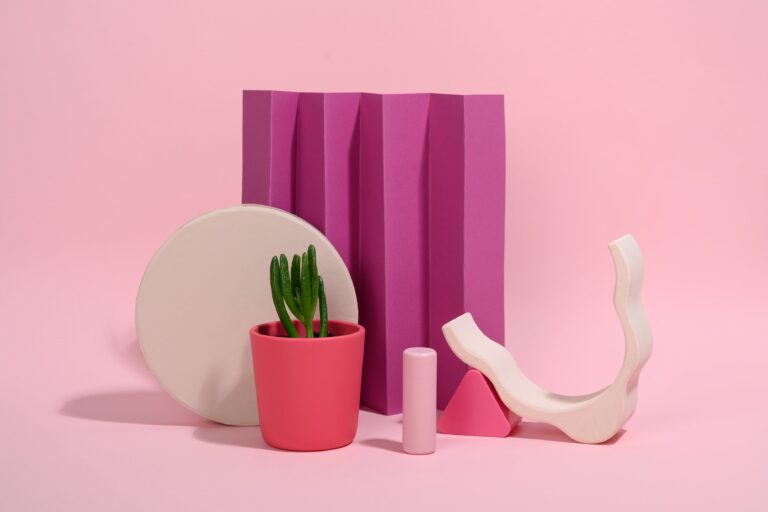
So grab those shears and keep your Crassula in tip-top shape. It’s more than just maintenance; it’s a labor of love that ensures your plant will continue to wow with its lush, green splendor.
Repotting Steps for Healthy Crassulas
Is your robust Crassula looking a bit too snug in its current pot? Maybe it’s whispering (in plant language, of course) for a little more room to stretch those roots. Well, you’ve come to the right place! Today, we dive into the surprisingly thrilling world of repotting Crassulas. Why thrilling, you ask? Because giving your plant a new home is like upgrading it from a cozy studio to a spacious apartment with a rooftop garden—it’s a big deal!
First off, you don’t want to jump the gun on this. Repotting should be a thoughtful procedure, not a spur-of-the-moment decision. Keep an eye out for telltale signs that it’s time for a change: roots poking out of the drainage hole, water zipping straight through the pot, or your plant looking more deflated than a balloon on the 2nd of January. It’s all about picking up on those subtleties—the slight droop of a leaf or a slower growth pace.
Now, before you get your hands dirty, let’s talk timing. Spring or early summer is like the repotting prime time—the “silly season” for plants. It’s when your Crassula is waking up from its winter nap and gearing up for a growth spurt. Picture it like hitting the gym right before muscle-building season. You’re prepping it to be in top-notch shape for all the growing it’s about to do!
As for the act itself, think of it as a plant spa day—it’s all about gentle techniques and reassurance. Start by picking a pot that’s just the right size—not too big, not too small, but a Goldilocks ‘just right’. This new abode should be about 20% larger than the current pot and must have excellent drainage. Remember, Crassulas detest soggy feet!
Give your Crassula a little coaxing out of its old pot, but be as tender as if you’re handling a delicate pastry. Loosen the roots with care, trimming away any that are dead or circling like aimless sharks. Prep your fresh pot with a well-draining soil mix that’ll make your Crassula sing with joy. If you’re mixing your own, try a blend of potting soil with gritty material like perlite or coarse sand—aim for a texture that reminds you of that perfect beach holiday sand.
Once nestled comfortably in its new container, give it a modest drink of water to ease any transplant shock. But hey, don’t throw a pool party just yet. Moderation is key! You want the soil to be damp, not soaked, like a sponge that’s lightly squeezed.
And because we’re all about visual learning and getting our hands in there, why not watch a real-life Crassula repotting in action?
Now, with all these steps fresh in your mind, you’re ready to give your Crassula plant the space it requires to thrive and grow. It’s remarkable how a change of scenery—even for a plant—can do wonders. So, repot with confidence and watch as your Crassula reaches new heights, quite literally!
Propagating Your Jade Plant
Let’s dive into the world of Crassula plants, or as you may know them, Jade Plants. These resilient succulents are not only a symbol of good luck but can also be easily propagated to spread their charm. I’ll share with you the secret sauce — everything about leaf cuttings, stem cuttings, and division with a side of tips for a successful propagation journey. Imagine cloning your favorite plant; that’s what propagation feels like!
Leaf Cuttings: A Simple Start
Have you ever admired a Jade Plant and wished you could replicate its beauty? Leaf cuttings are your go-to method. It’s like picking a piece of a puzzle and finding it grows into a new image. Simply pluck a healthy leaf, let it callous for a couple of days, and then nestle it atop a bed of well-draining soil. Mist it with water and wait for the magic to happen. It’s a patient wait, but the sight of tiny roots searching for ground is nothing short of a miracle.
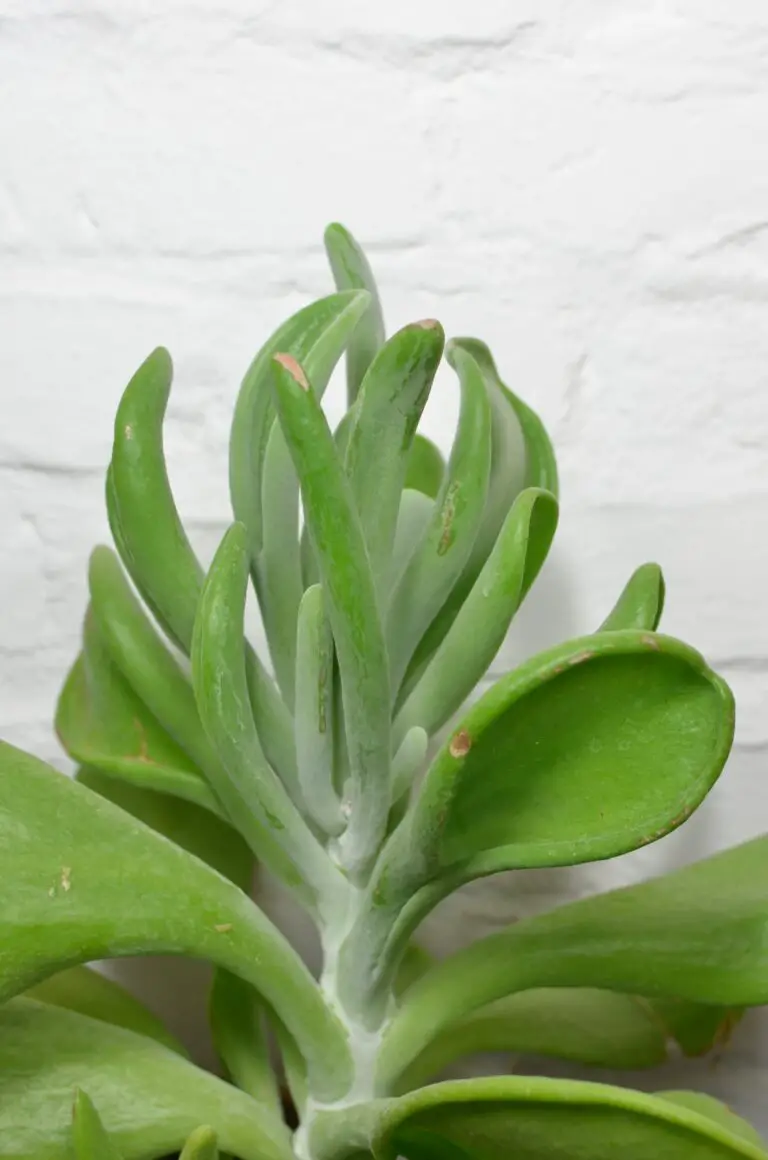
Stem Cuttings: Raising the Stakes
When it’s time to take propagation to the next level, stem cuttings are the answer. Snip a healthy stem, let it dry out to form a callous like a seasoned warrior, and then plant it in soil that drains faster than your morning coffee. Give it the right light and a sip of water, and before you know it, roots will emerge, ready to anchor a new life. Remember, it’s all about finding that sweet spot of moisture — not too drenched and not too dry.
Division: Multiplication by Division
Sometimes, your Jade Plant might resemble a miniature forest, and that’s when division comes into play. It’s the art of gently separating the plant into sections, making sure each piece has a good chunk of roots, like gifting each division its survival kit. Replant in individual pots and watch as they grow into self-sufficient specimens. Isn’t it amazing how life finds a way?
While each method has its rhythm and pace, they all share the same tune of patience and care. The moment you see new growth is a small victory, a testament to your nurturing. But remember, you’re not just propagating plants; you’re cultivating joy, resilience, and maybe a little bit of that green-thumb pride. Stay vigilant for pests and diseases; after all, your mini garden warriors deserve the best defense.
Ready to embark on this botanical adventure? Embrace the process, and soon, your home will be an oasis of Crassula plants, each with a story of how it came to be. Just imagine that—a flourishing collection, all stemming from a single leaf or stem. Now, that’s what I call a greenthumb achievement!
Troubleshooting Common Issues
Gardening, like any other craft, has its fair share of hurdles, and when it comes to the robust Crassula plant, there are certain challenges one might face. While typically a tough and forgiving succulent, Crassula plants have their vulnerable moments. Let’s dig into the root of these problems and nurse your Jade Plant back to health!
First off, imagine walking into your living room, the sun beaming through the window, only to find your Crassula’s once perky leaves turning yellow and drooping. It’s a common symptom that can indicate several issues. Often this is a sign of overwatering—Crassula’s dread having wet feet for too long. To prevent this, ensure you’re watering only when the soil has completely dried out.
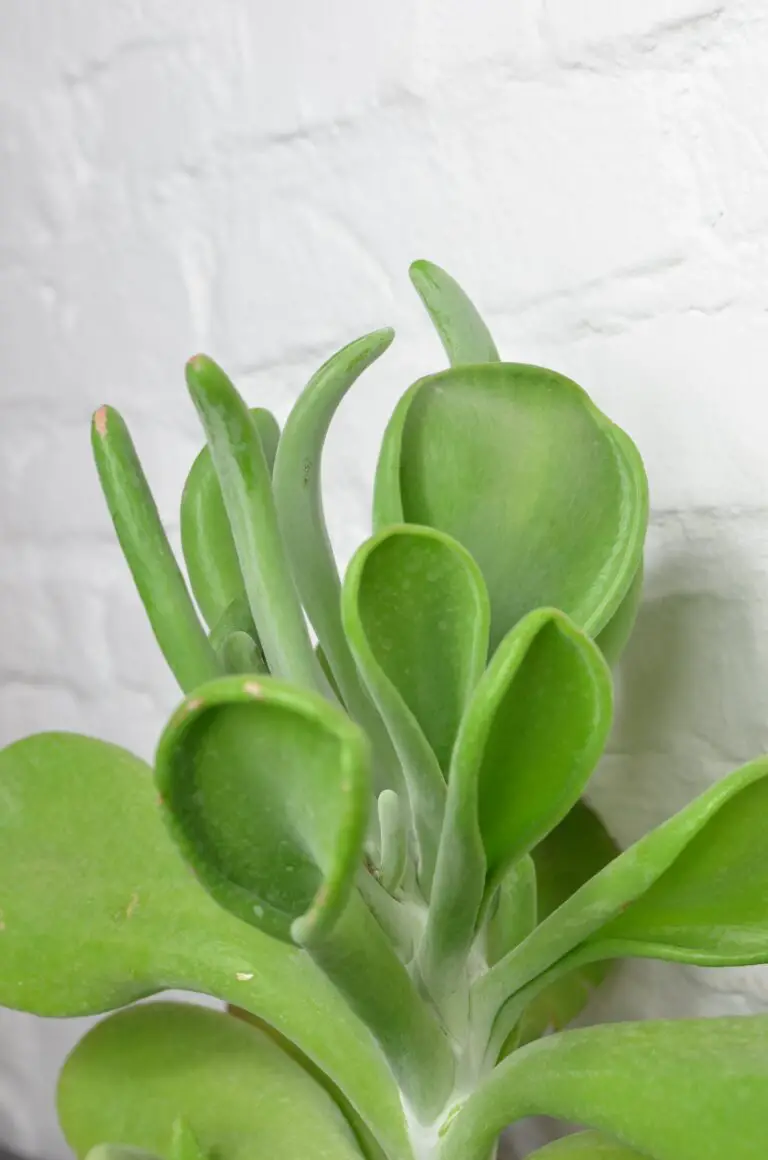
But what if you’ve been stingy with the water can, and yet your Crassula is looking as sad as a rainy day? Yellowing and wilting in Crassula can also hint at nutrient deficiencies. Every now and then, these succulents crave a little feeding to flourish. A balanced, diluted fertilizer during the growing season should perk them right up.
Now let’s talk about uninvited guests. Sometimes you may spot tiny insects making a home out of your Crassula. Mealybugs are notorious for this, taking delight in your plant’s sap. If these pesky pests are spotted, dabbing them with a cotton swab soaked in alcohol can send them packing. For a more severe infestation, insecticidal soaps can be a plant-saver.
Environmental Stress Signals
The perfect spot in your home for a Crassula isn’t just about aesthetics. These plants are telling when it comes to their environmental needs. Browning leaf tips often scream, “Too much sun!” While Crassula loves sunlight, they can get sunburned just like us. A spot with bright, indirect light might be the best compromise.
On the flip side, if the leaves are stretching out and losing their compact shape, your Crassula is probably reaching for more light. Stretched-out and leggy Crassula can benefit greatly from a sunnier spot or even grow lights during the darker months.
Last but not least, temperature fluctuations can throw Crassula for a loop. Often located near windows, they can suffer from drafts or heat from radiators. Consistency is key—try to keep your Crassula away from cold drafts in winter and avoid placing them directly in the pathway of hot air.
Remember, your Jade Plant is a resilient chap, but even the strongest of us need a bit of TLC now and then. Keep an eye out for these common culprits, and you’ll have a lush, vibrant Crassula that’s the envy of the plant world!
Decorating with Crassulas
A succulent that demands attention yet flourishes with minimal care—meet the Crassula, more fondly referred to as the Jade Plant. Incorporating these verdant pals into your living space not only injects a dose of nature’s tranquility but also gives you a canvas for your creativity. Let’s dish out some real-life tips on making these succulent buddies the highlight of your home decor!
Imagine the scene: a sunlit room where each Crassula casts a robust silhouette against the walls—an effortless statement of elegance and life. Here’s the trick—place your beloved Jade Plant near a south-facing window, where rays of sunshine can give it that enviable glow. But remember, they’re not thirsty for the limelight all the time; a little shade will do them good too.
Have a dull corner that’s craving some character? A large Crassula ovata can become the cornerstone of such spaces. Pair it with a modern, minimalist pot, and voilà—you have a living sculpture that thrives on being the center of attention. It’s the perfect example of how greenery can elevate simplicity.
But what about those smaller nooks? You know, the empty tabletops or lonely bookshelves—well, enter the miniature varieties of Crassula. Cluster these little champs together, and you’ve got yourself a vibrant, textured landscape right in your living room. To really jazz it up, mix in some spiky Aloes or velvety Echeverias for that ultimate desert chic vibe.
Creating Balance with Crassulas
Balance is key in any home decor, and Crassulas, with their diverse forms, can help you achieve just that. Picture this—a sleek, long dining table adorned with petite Jade Plants, each one anchoring a setting. Not only do they serve as great conversation starters, but they also bring a sense of life and balance to your feasts.
Don’t just stop at the visuals though—consider the air. These little green wizards are not only aesthetically pleasing but also masters of ambiance. They purify the air, creating a fresher and more invigorating environment. Did we mention they’re known for ushering in good luck too? A charming bonus, indeed!
It’s not all about flying solo; sometimes, it’s the company you keep that counts. Crassulas, often with their thick, glossy leaves can produce quite the contrast when paired with the feathery fronds of a Fern or the cascading tendrils of an English Ivy. It’s an ensemble that whispers elegance and whispers it loudly.
Ready for a visual? Check out this video for some extra inspiration on designing with Crassulas.
When you’re decorating with Crassulas, remember this mantra: Be bold, be creative, and most importantly, be you. With these lush friends by your side, your home won’t just be another living space; it’ll be a sanctuary of well-being and style. So go on, give those Crassulas the spotlight they deserve, and watch as they transform your abode into an oasis of calm and class.
Frequently Asked Questions
Are you pondering how to best pussyfoot around the pampering of your precious Crassula plant? Fear not, green thumbs and plant newbies alike – we’ve gathered a garden of queries to help your jade plant thrive. Let’s delve into the verdant world of Crassula care with some real-life curiosity from plant enthusiasts!
What’s the ideal lighting for a Crassula plant?
Imagine your Crassula basking in the soft morning light, akin to a lazy cat lounging in a sun-soaked window. That’s right, Crassula plants adore bright, indirect sunlight. However, a sunburn is a no-go, so shield your green buddy from harsh afternoon rays. Think of it like finding the perfect sunhat for your plant’s day at the beach!
How often should I water my jade plant?
Now, imagine you’re in the desert, a parched wilderness stretching far and wide. You wouldn’t guzzle an oasis dry in one go, and neither should your Crassula. These succulents prefer a drink only when their soil is dryer than a witty retort. Overwatering? It’s like throwing a pool party without a pool – it just doesn’t make sense.
Is feeding my Crassula necessary?
Visualize treating your plant to a fine dining experience – but only occasionally. Crassula plants aren’t big eaters; a modest meal of fertilizer during the spring and summer will suffice. It’s like sprinkling a little extra parmesan on your pasta; just enough is just right.
This real-life scenario can shed some light: A friend’s Crassula was looking as glum as a rainy Monday. With a dash of balanced, water-soluble fertilizer, it perked up as if it had just returned from a spa retreat.
Should I be concerned about pests?
Think of pests as uninvited party crashers to your Crassula’s serene soiree. Keep an eye out for freeloading aphids or mealybugs looking for a free meal. Should these critters invite themselves, a gentle escort out with some insecticidal soap will keep your plant’s party exclusive.
Incorporating a video is a smart way to give a visual dimension to the Crassula care we’re discussing. So, here’s one that will help you propagate your jade plant, showcasing just how fun and easy extending your green family can be:
Each Crassula plant, much like us humans, has its own personality and quirks. By tuning into these FAQs and observing your leafy friend’s behavior, you’re on your way to becoming a bona fide Crassula whisperer!
